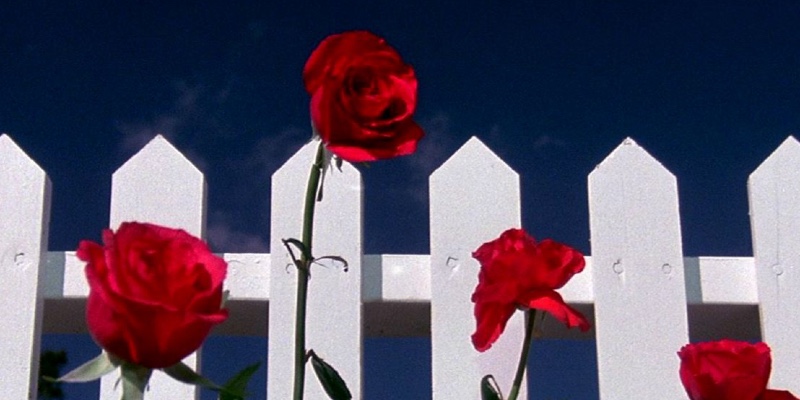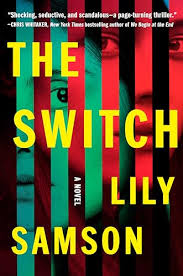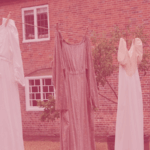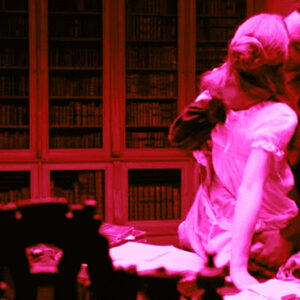I remember seeing a clip from David Lynch’s Blue Velvet as a teenager: Kyle MacLachlan reaching down into a grassy field and discovering a severed ear crawling with ants. It was such a disturbing and surreal image that it stayed with me for years to come. Later in life, I discovered articles that cited it as a symbolic moment in Lynch’s films, one that captured the dark undercurrents of suburban life in smalltown America, the strange happenings behind white picket fences.
The Sunday Times (UK) has predicted that 2024 will be the year of suburban noir. In recent years there have been a glorious glut of thrillers set in cozy country settings à la Agatha Christie, or exotic holidays abroad. But thrillers are, apparently, returning to the domestic. I had no idea that I was going to be on trend when I sat down to write The Switch two years ago. I chose the setting because I enjoy writing in cafes and I live close to Wimbledon Village, a suburb in South London that has a character all of its own. It’s leafy and beautiful, with a green common sporting a pond surrounded by geese and ducks; a quaint high street with old-fashioned shops selling wine or designer dresses or fancy kitchenware. The houses are grand and owned by millionaires.
I enjoyed strolling down its streets and savouring the property porn. I’d catch glimpses – through lavish drapes of wisteria, or over the top of security gates – of windows framing living-rooms that looked so impeccable they belonged to a set from The Crown. I would wonder if beneath the veneer of luxury the inhabitants were just as fraught and troubled as the rest of us. One day, one of these wealthy characters looked up from trimming their ceanothus and gave me a slightly anxious glance. There had been a recent spate of burglaries; I think that everyone walking past was making him nervous. Their lives, I realised in surprise, were not always one of satisfied abundance, but of fear too.
This is the perverse delight of reading suburban noir: it takes this common experience a step further, enabling us to play voyeur, to twitch aside the curtain and dive into the lives of those we speculate about. This was why The Girl on the Train was such a huge success. It’s the commuter equivalent of Rear Window: we’ve all had that experience of being bored on a train, gazing out through the window into a passing house, and wondering who might live there.
When I came to write The Switch, I was inspired by a short story by Roald Dahl, The Great Switcheroo, originally published by Playboy in the 70s. Two men who live opposite each other plot to swap wives in secret, in the dark, without them knowing, by sneaking into each other’s houses at night. It’s a dark, dirty, bizarre, uncomfortable, outrageous story with a moral twist in the tale as the men get their comeuppance. What if, I wondered, I played with this conceit but reversed the genders? What if two women decided to swap their male partners?
I created a heroine, Elena, who is in a stagnant relationship with Adam. They get a six-month housesit in Wimbledon village, finding themselves elevated into a level of luxury they could never normally afford. There they meet a dazzling couple: Sophia is like a Hitchcock heroine, whilst Finn has Cary Grant looks and charisma. When Sophia makes an indecent proposal that they swap partners in secret, without the men knowing, Elena is shocked. But despite her moral concerns, she agrees. The partner-switching becomes a dangerous addiction and soon escalates, for Sophia’s intentions are complex and there is a game behind her game; I wanted the darkness and danger to slowly creep into their suburban lives like a fog that gradually thickens…
“Domestic noir” is a term that Julia Crouch coined in 2013 to mark a new trend in thrillers – a shift away from gritty police procedurals or adrenaline-fuelled spy stories towards traditionally female concerns, epitomised in novels such as Gillian Flynn’s Gone Girl or Louise Candlish’s Our House. As Crouch states: “In a nutshell, domestic noir takes place primarily in homes and workplaces, concerns itself largely (but not exclusively) with the female experience, is based around relationships and takes as its base a broadly feminist view that the domestic sphere is a challenging and sometimes dangerous prospect for its inhabitants.”
Suburban noir plays on classic feelings of fear and curiosity. Just how well do we know our neighbors, that family across the street whom we wave to when we pass them on the way to work, or see them taking our their trash? Can we trust them? What’s really going on behind their smiles and cheery hellos? This is fascination of Behind Closed Doors by B. A. Paris, one of my favorite domestic thrillers, where Grace is trapped in a marriage to a psychopath. They host dinner parties where she must cook to perfection, where she cannot give away the slightest hint that she is living in hell: her life depends upon it. Her suburban marriage becomes a web she cannot untangle herself from. The need to keep up appearances is taken to its most toxic extreme. In Kia Abdullah’s Those People Next Door, a family moves to a suburban paradise that is blighted when their neighbors tear down a Black Lives Matters sign; as enmity rises between them, played out in nasty games, social media and finally, in court, themes of racism and prejudice are explored with nuance.
Suburban noir often deals with themes of invasion. Our homes should be a safe space, a refuge from the demands of daily life. In horror films such as Funny Games, the destruction of home security is pushed to full-blown extreme; in domestic noir, its depiction is more subtle. In Adele Parks’ I Invited Her In, a female friend who comes to stay becomes a nightmare when she seduces the family’s son; in Nicola Sanders’ Don’t Let Her Stay, a step-daughter moving in becomes a disruptive presence when she plays a sociopathic game of switching on the charm to conceal her manipulative, destructive schemes.
Of course, all suburban noir also owes a debt to the great J.G. Ballard, who was fascinated by the way that architecture and place shapes our lives. He famously spent his life living in Shepperton; in his novels he explored the violence that simmers beneath the surface of gated communities, whose bored inhabitants secretly crave destruction. His classic, Kingdom Come, begins with an opening that says it all: “the suburbs dream of violence. Asleep in their villas, sheltered by benevolent shopping malls, they wait patiently for the nightmares that will wake them into a more passionate world…”
***


















